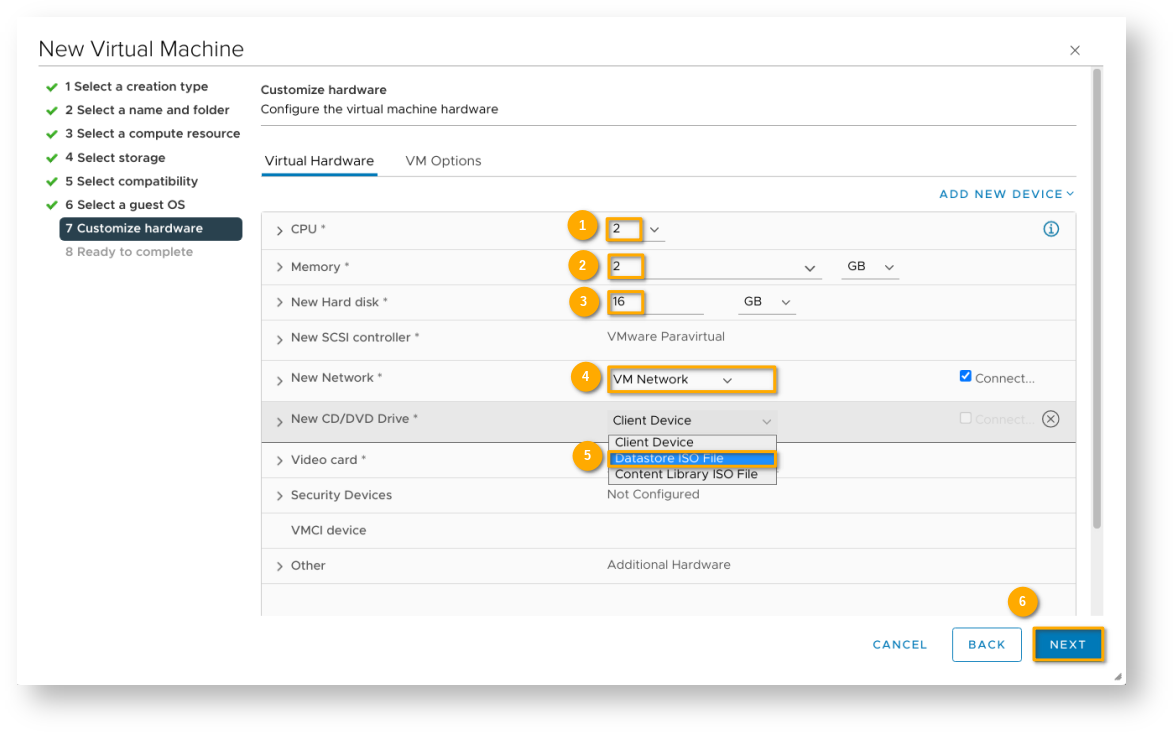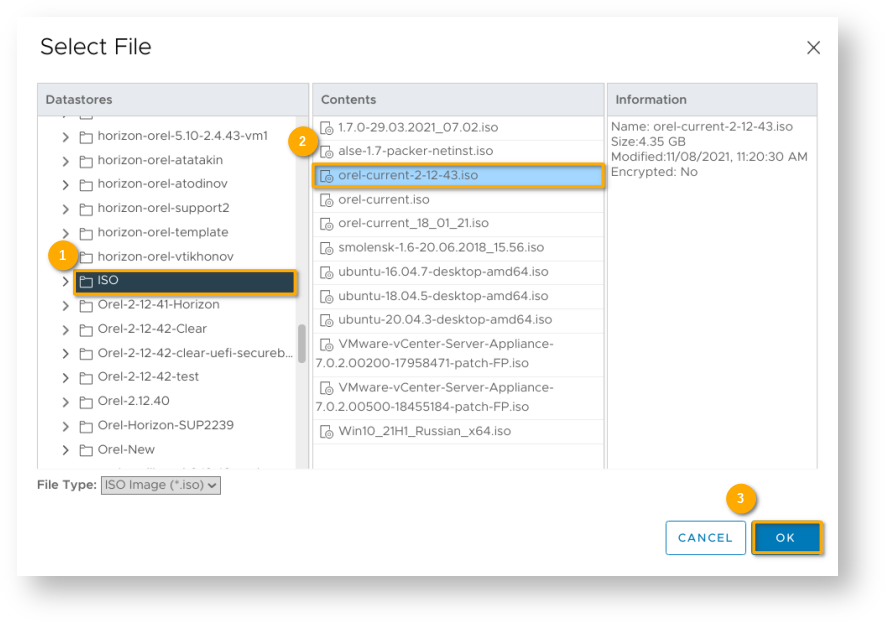The target audience: engineers
This article is applicable to:
Список использованных материалов
VMware's Product documentation and Technical Articles were used.
Creating a Virtual Machine with the New Virtual Machine Wizard.
To create a new Virtual Machine (VM) launch vSphere Client, select Inventory in the Main Menu.
Right-click any inventory object that is a parent object of a VM, such as a data center, folder, cluster, resource pool, or host, and select New Virtual Machine.
In a New Virtual Machine window on the 1 Select a creation type page, select Create a new virtual machine and click Next.
On the 2 Select a name and folder page, enter a unique name for the VM and select a deployment location. Wherein VM's name can contain letters of the Latin alphabet and any characters, numbers, signs and spaces. Click Next.
On the Select a compute resource page, select the host, cluster, resource pool, or vApp where the VM will run and click Next. If creating the VM at the selected location causes compatibility problems, an alarm appears in the Compatibility pane.
On the 2 Select storage page, choose next:
- a datastore or datastore cluster where VM's files should be stored in
- VM storage type, by default – Standard
- VM Storage Policy, by default – Datastore Default.
Click Next.
On the 5 Select compatibility page, select the VM compatibility with ESXi host versions and click Next. To have access to the actual hardware features, select the latest ESXi host version.
On the 6 Select a guest OS page select next:
- Guest OS Family – Linux
- Guest OS Version – Other 4.x or later Linux (хх-bit) или Other 5.x or later Linux (хх-bit).
Click Next.
Warning!
Important: Do not change the firmware after the guest OS is installed. The guest operating system installer partitions the disk in a particular format, depending on the firmware version. If the firmware'll be changed, it will not be able to boot the guest.
On the 7 Customize hardware page, configure the VM hardware and options.
Note.
Configuring VM Hardware:
- CPU – Virtual CPU configurating allows to add, change, or configure CPU resources to improve VM performance.
- Memory – Virtual Memory configurating allows to add, change, or configure VM memory resources or options to enhance VM performance..
- New Hard disk* – Virtual Disk configurating allows to add large-capacity virtual disks to VMs and add more space to existing disks, even when the VM is running.
- New SCSI controller* – SCSI, SATA, and NVMe Storage Controller conditions, limitations, and compatibility. To access virtual disks and SCSI devices, a VM uses storage controllers, which are added by default when you create the VM. You can add additional controllers or change the controller type after VM creation
- New Network* – VM Network configurating. vSphere networking features provide communication between VMs on the same host, between VMs on different hosts, and between other virtual and physical machines. It is able to select or change an adapter type, a network connection, and whether to connect the network when the VM powers on.
- New CD/DVD Drive* – It is necessary to select the device from which the OS will be installed (Datastore ISO File to be selected in storage using Select File form). Set the Connect At Power On status so that CD-Rom turns on at the same time as VM.
- Security Devices – Securing VMs with Virtual Trusted Platform Module.
- Other – Other VM Device configurating. Not all devices are available to add and configure.
Configuring VM Options:
- General Options – in this section, it's able view following settings:
- VM name
- VM configuration file location
- VM working location
- Guest operating system and OS version
Currently, it's allowed only edit the VM name.
- VMware Remote Console Options – the locking behavior of a VM and the settings for simultaneous connections.
- Encription – the encryption settings of a VM.
- Power management – VM suspend behavior.
- VMware Tolls – VMware Tools scripts. Is necessary to customize the automatic VMware Tools upgrades, automatically synchronize the guest time of the VM on startup or resume with the host, and periodically synchronize the guest time with the host.
- Boot Options – VM boot options. By default, the Firmware field is set to EFI. The Secure Boot option needs to be disabled because this protocol is not supported by FPP (Full Product Package) Astra Linux Common Edition 2.12.
- Advanced – advanced VM options:
- Acceleration and logging settings
- Debugging and statistics
- Swap file location
- Latency sensitivity
- Fiber Channen NPIV – allows to change the virtual node and port World Wide Names (WWNs).
It's possible to view or change VM settings from the vSphere client. Not all settings are available for every VM, and some settings are better to leave at their defaults. Read more – here.
After completing the hardware and VM settings, click Next.
On the 8 Ready to complete page, review the details and click Finish. Создание и предварительная настройка виртуальной машины завершены.
VM launch
In the vSphere Client, select the VM and start it by clicking the Power On button at the top of the window. Wherein the Power Status parameter will be displayed as Powered On.
OS installation
Select the VM to install OS, and launch the console with the Launch Console button . In the OS launch window, specify the installation mode and then follow the standard instructions (PDF to download – here). Setup and Maintenance Instructions for Astra Linux Common Edition 2.12 – here.
After OS installed and configured, it's need to install VMware Tools by entering in a Fly terminal (<Alt+T>) following string
apt install open-vm-tools open-vm-tools-desktop
VMware Tools improve the interaction between the VM and the hypervisor, increases the performance of VM's operating system.
Please note, VMware Tools is only available for Astra Linux Common Edition 2.12.43 and later.
Correct installation and launch of OS and VMware Tools set are indicated by the Running state and display of VMware Tools version.














